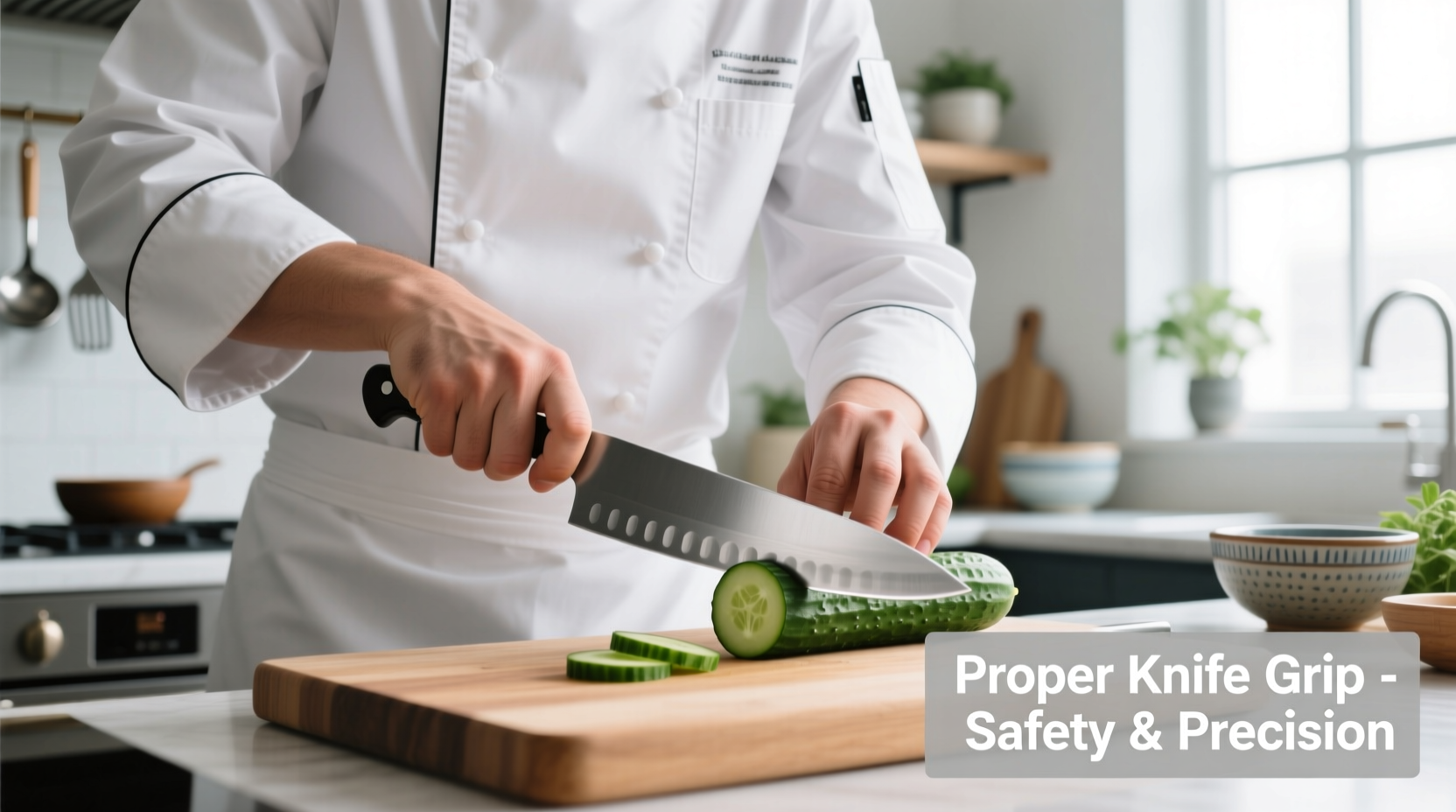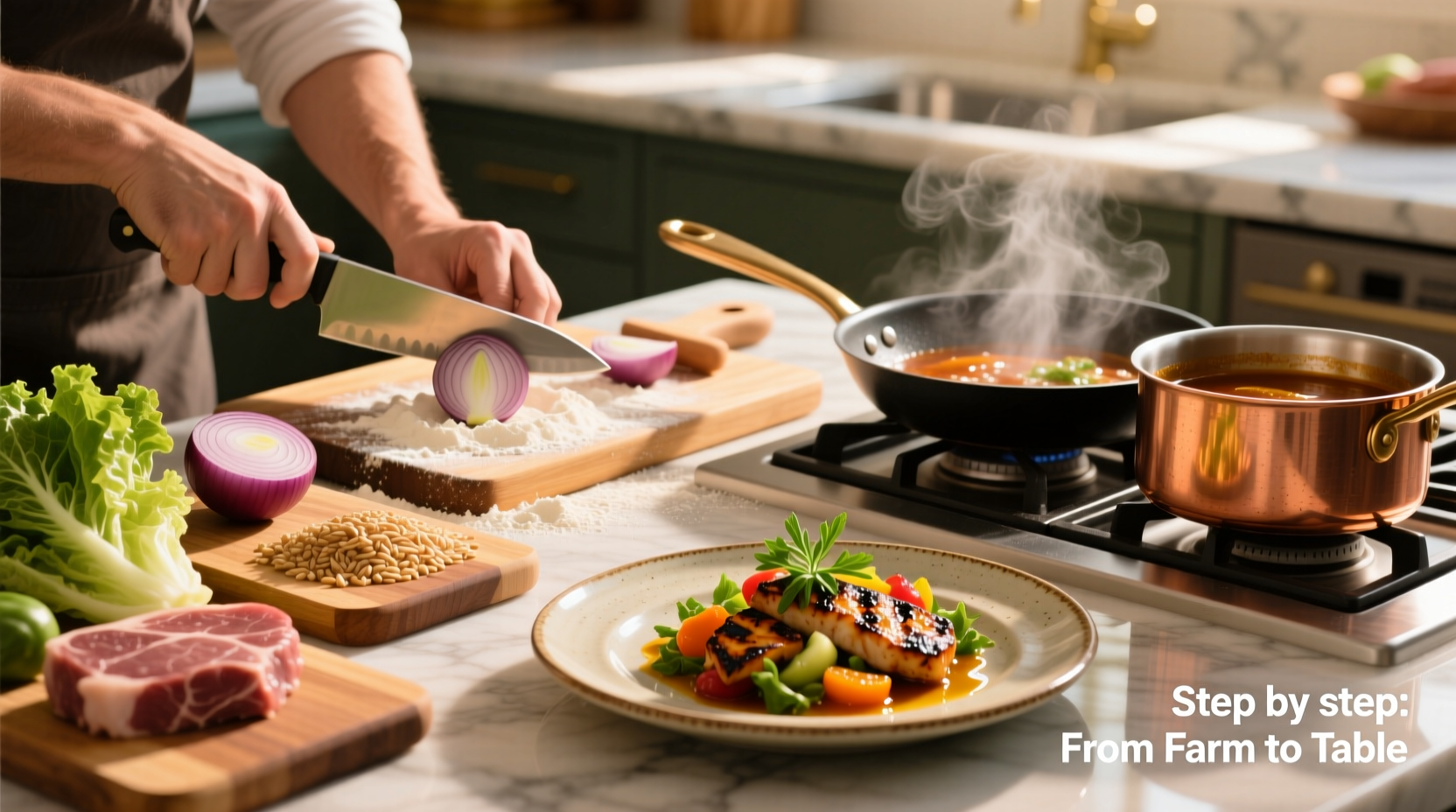We make food through a combination of selecting quality ingredients, applying appropriate cooking techniques, and following safety practices to transform raw components into safe, nutritious, and flavorful meals. This fundamental process has evolved over thousands of years but maintains consistent principles that anyone can learn.
Master the essential cooking fundamentals: understand heat control, develop knife skills, practice food safety, and learn basic techniques that transform raw ingredients into delicious meals. This guide provides actionable steps to build confidence in your kitchen from day one.
The Journey from Raw Ingredients to Nourishing Meals
Creating food begins with understanding the transformation process that turns raw ingredients into edible, safe, and enjoyable meals. Whether you're preparing a simple scrambled egg or an elaborate feast, certain universal principles apply. Let's explore the practical steps that form the foundation of all cooking.
Understanding Basic Cooking Principles
Cooking fundamentally involves applying heat to food to achieve three primary objectives: making food safe to eat, improving digestibility, and enhancing flavor. The USDA Food Safety and Inspection Service confirms that proper cooking temperatures destroy harmful bacteria while preserving nutritional value. Understanding this science helps you make informed decisions in the kitchen.
| Cooking Method | Temperature Range | Ideal For | Key Benefits |
|---|---|---|---|
| Searing | 400-450°F (204-232°C) | Meats, fish | Creates flavorful crust through Maillard reaction |
| Sautéing | 325-375°F (163-190°C) | Vegetables, proteins | Quick cooking while maintaining texture |
| Simmering | 180-205°F (82-96°C) | Sauces, soups, stews | Gentle cooking that develops flavors |
| Baking | 300-450°F (149-232°C) | Breads, pastries, casseroles | Even heat distribution for consistent results |
Essential Kitchen Equipment for Beginners
Starting your cooking journey doesn't require expensive tools. Focus on these fundamental items that professional chefs and home cooks alike consider indispensable:
- A chef's knife (8-10 inch) with a comfortable grip
- cutting board (wood or plastic, never glass)
- Two versatile pans: a 10-12 inch skillet and a 3-quart saucepan
- Basic utensils: spatula, wooden spoon, tongs, and whisk
- Food thermometer (critical for food safety)
According to culinary education standards from the American Culinary Federation, these five categories cover 90% of basic cooking techniques. Invest in quality pieces that will last rather than accumulating numerous cheap tools that perform poorly.
Food Safety Fundamentals

Safe food preparation separates enjoyable cooking from potential health risks. The Centers for Disease Control and Prevention reports that proper food handling prevents millions of foodborne illnesses annually. Follow these essential practices:
- Maintain the temperature danger zone: keep food out of the 40-140°F (4-60°C) range where bacteria multiply rapidly
- Practice proper hand washing: 20 seconds with soap before handling food and after touching raw meat
- Use separate cutting boards for produce and proteins
- Clean surfaces with appropriate sanitizers after each task
- Store leftovers properly within two hours of cooking
Mastering Core Cooking Techniques
Developing proficiency in these fundamental techniques will dramatically improve your cooking results:
Knife Skills That Make a Difference
Proper knife technique affects cooking time, texture, and even flavor distribution. The Culinary Institute of America emphasizes that consistent cuts ensure even cooking. Start with these basic cuts:
- Julienne: Matchstick pieces (1/8 inch thick)
- Dice: Small cubes (1/4 to 1/2 inch)
- Mince: Very fine pieces (1/8 inch or smaller)
Heat Control Mastery
Understanding how different heat levels affect ingredients is crucial. Professional chefs follow this progression:
- Start with high heat to sear proteins
- Reduce to medium for even cooking
- Finish with low heat for delicate items
This approach prevents burning while ensuring thorough cooking.
The Evolution of Cooking Techniques
Cooking has evolved dramatically from our ancestors' first controlled use of fire. According to research from the Smithsonian National Museum of Natural History, the timeline of cooking development reveals important insights for modern cooks:
- 1.5 million years ago: Early humans began using fire for cooking, making food safer and more digestible
- 500,000 years ago: Development of roasting techniques over open flames
- 10,000 BCE: Invention of pottery enabled boiling and stewing
- 17th century: Introduction of precise temperature control with thermometers
- 20th century: Development of modern appliances like microwaves and convection ovens
This historical perspective shows that while tools have changed, the fundamental principles of applying heat to transform ingredients remain constant.
Common Mistakes to Avoid as a Beginner Cook
Learning from others' experiences accelerates your cooking journey. Based on culinary instructor observations, these pitfalls commonly trip up new cooks:
- Overcrowding the pan: Causes steaming instead of searing - cook in batches for better browning
- Not seasoning throughout the process: Add salt in stages rather than all at the end
- Skipping the resting period: Proteins need 5-10 minutes to redistribute juices after cooking
- Using dull knives: Increases injury risk and makes precise cuts impossible
Getting Started with Confidence
Begin your cooking journey with these practical steps that build skills progressively:
- Start with one cooking method (sautéing is most versatile)
- Master three basic recipes before expanding your repertoire
- Keep a cooking journal to track what works and what doesn't
- Practice knife skills daily with simple chopping exercises
- Learn to taste critically and adjust seasoning appropriately
Remember that even professional chefs started exactly where you are now. The key is consistent practice and willingness to learn from each experience in the kitchen.
Practical Application: Your First Cooking Session
Put these fundamentals into action with this simple but instructive exercise:
- Prepare vegetables using proper knife skills
- Heat oil in a skillet to the correct temperature (shimmering but not smoking)
- Add vegetables in order of cooking time (hard vegetables first)
- Season with salt in stages, tasting as you go
- Finish with a splash of acid (lemon juice or vinegar) to brighten flavors
This basic sequence teaches multiple fundamental skills while producing a delicious result. As you gain confidence, experiment with different ingredients and techniques while maintaining these core principles.











 浙公网安备
33010002000092号
浙公网安备
33010002000092号 浙B2-20120091-4
浙B2-20120091-4